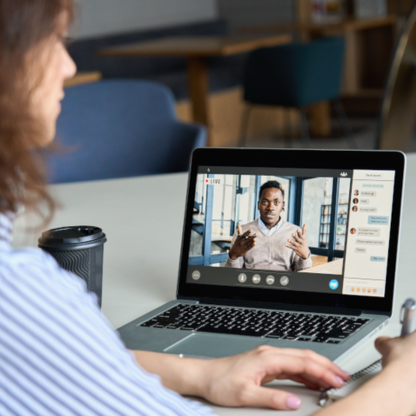As the 2024 ISC2 Cybersecurity Workforce Study reveals, it has been a challenging year for professionals as economic conditions contributed to declining investments and slowing workforce growth, while the workplace is being transformed by AI, quantum computing and other factors.
The impact of the last year on the cybersecurity profession is top-of-mind for cybersecurity professionals, leaders and their organizations as we close out the year. Job vacancies, hiring freezes, layoffs, and increased demand are concerns for both hiring managers and cyber pros. In our Virtual Spotlight, subject matter experts across multiple industries will discuss strategies and solutions for the challenges facing cyber professionals. Attendees will learn from thought leaders, while connecting and learning how to build stronger security teams, plus earning more than five CPE credits. Pre-registration is required to earn ISC2 CPE credits and access the on-demand recordings. Register now.
The two-day virtual event is available free for ISC2 members, ISC2 Spotlight: How 2024 Changed the Future of Cybersecurity. Join us Wednesday, November 6th at 10:00 a.m. ET, with our moderator, Brandon Dunlap.
The event’s agenda includes sessions discussing cybersecurity predictions for 2025, the latest research from ISC2’s 2024 Cybersecurity Workforce Study and the future of AI, identifying metrics that matter and new opportunities for cyber professionals as the workforce gap widens.
How 2024 Changed the Future of Cybersecurity Agenda
Wednesday, November 6
Vendor Exit Strategies: Avoiding the Lock-In
In this opening panel discussion, Vendor Exit Strategies: Avoiding the Lock-In, our presenters will discuss key strategies on how to have clear vendor exit plans, boost the organizations resilience, minimize security risks and strengthen your vendor manage posture such as:
- Why organizations should have plans to mitigate or avoid vendor lock-in.
- Strategies to minimize risk of relying on a single vendor's solution.
- How to maintain control of your cybersecurity infrastructure.
Candy Alexander, CISSP, CISM, CISO and Security Practice Leader, NeuEon
Bence Hezso, CISSP, Founder of EscapeCloud
Timothy Rohrbaugh, Principal, CISOonCall LLC
Myth vs. Reality: Quantum Encryption
The U.S. National Institute of Standards and Technology (NIST) released three post-quantum encryption standards in August 2024 – a key step in preparing organizations for a world in which quantum computers can defeat traditional encryption. But what does this mean in the short term for 2025?
This session will look at how the threat of malicious quantum-based hacking is gradually becoming a reality (e.g. steal now, decrypt later tactics), while also staving off unnecessary panic.
Join this session to examine how big of a threat AI is in terms of accelerating the post-quantum timeline, to what extent will NIST’s new standards protect you, and what you need to do in the coming year to prepare.
Richard Tychansky, ISSEP, CISSP, CCSP, CGRC, CSSLP
Cybersecurity Predictions for 2025
The cybersecurity threat landscape continues to evolve rapidly, with this year marking significant advancements across the field. As we approach 2025, the challenges and risks are higher than ever. Join this roundtable discussion to discover the top three cybersecurity predictions that will shape your defenses and strategies in the coming year. Gain invaluable insights from industry experts and stay ahead of emerging trends. Whether you're a security leader or practitioner, this session will provide actionable takeaways to help you prepare for the key shifts in the 2025 threat landscape.
Parul Khanna, CISSP, Director, Information Security, Manulife
Chloé Messdaghi, Founder and Principal Consultant, SustainCyber
Michael Miora, ISSMP, CISSP, Founder & CEO, InfoSec Labs LLC
Thursday, November 7
AI in Cybersecurity: The Collaboration between Technology and Human Expertise
In today’s rapidly evolving digital landscape, the integration of artificial intelligence into cybersecurity job functions offers both advantages and challenges. The explosion of AI usage has led to applications across threat intelligence, incident response automation, and more. But, what about the human element? It is important that we don’t lose focus on the necessary collaboration between AI systems and cybersecurity professionals and look strategically at what this means for potential changes to required skill sets in the years to come. This panel of experts will discuss:
- Practical implications of AI for the cybersecurity workforce.
- Human expertise not only complements AI technology but is critical to ensuring a robust and effective cybersecurity response strategy.
- Challenges posed by the adversarial use of AI, and how to factor this into your 2025 planning.
- What skills are needed to ensure you and/or your team are ready to implement AI into your cyber program?
- Identifying which tasks are best suited for AI, and which should remain part of human job descriptions.
Joseph Carson, CISSP, Chief Security Scientist & Advisory, Delinea
Kris Rides, CEO, Tiro Security
Identifying the Cybersecurity Metrics that Actually Matter, sponsored by Axonius
When it comes to cybersecurity metrics, there are a lot of elements to consider. What risks are most critical to your organization? Which business units are the most likely targets? Where does security sit in the list of business priorities? The real question is - where do you start? It all comes down to business context. Join Axonius for a roadmap on how to determine which cybersecurity metrics actually matter for your organization. We’ll cover:
- The state of cybersecurity spending today.
- How to showcase the value of cybersecurity spending.
- How to enhance your cybersecurity program.
Frederico Hakamine, Security Evangelist, Axonius
Cyber Workforce Growth Slows and Pressures Mount, Employers Must Act
The 2024 ISC2 Cybersecurity Workforce Study explores how AI adoption is influencing the way cybersecurity professionals view their organizations’ security strategies, and their own personal professional development and career pathways. Join us for a look at this year’s research and how your peers are dealing with AI today and what they expect from AI in the next few years.
Marinda Hamann, Lead, Global Research, ISC2
Register now for the two-day virtual event.
Related Insights



